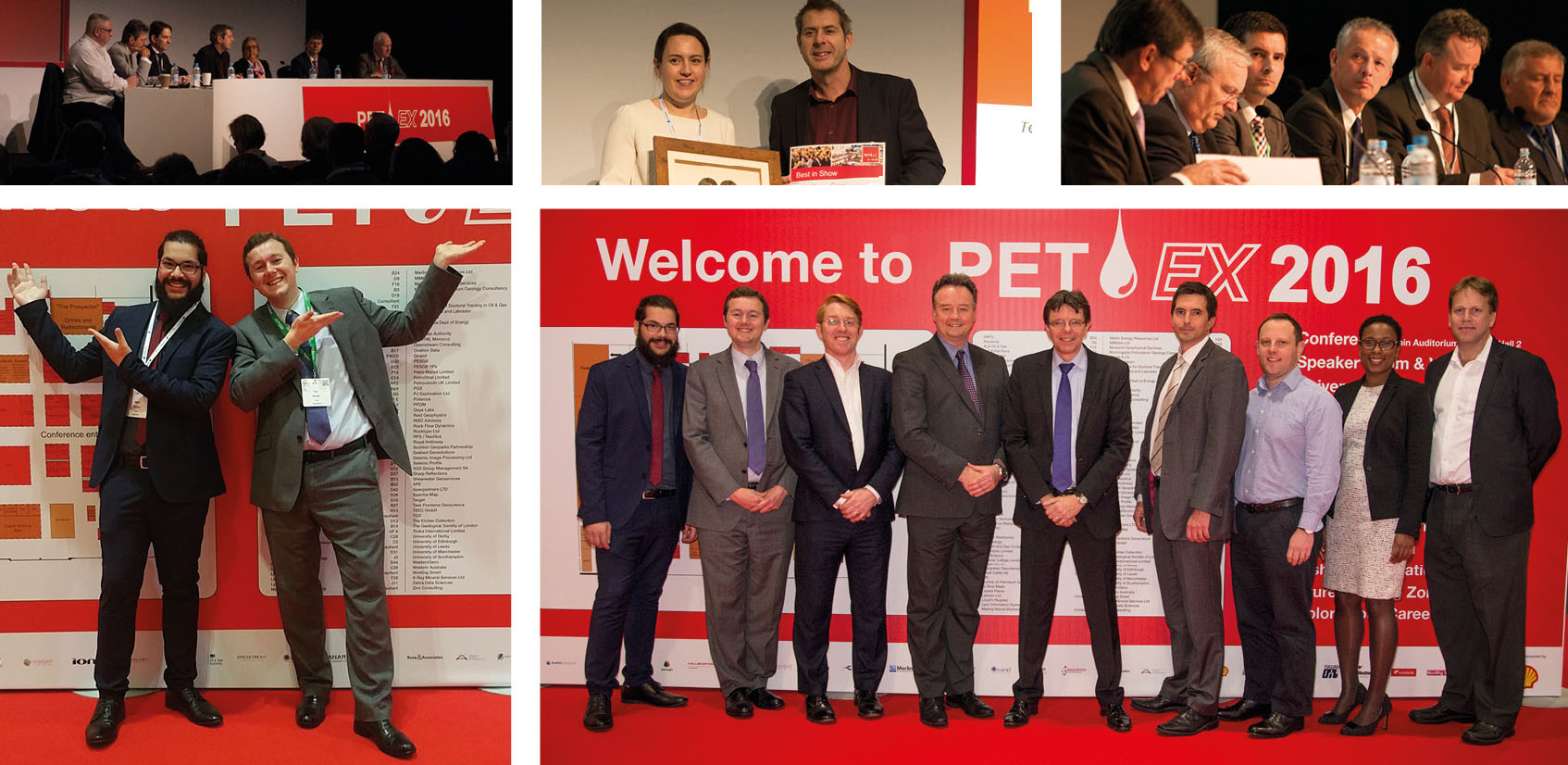REVIEW: PETEX 2016

Review by Aaron Lockwood
At the time of PETEX in 2014 the price of oil was at about $70 and the mood of the conference was one of trepidation and uncertainty. Two years later something had changed. We now know that the price of oil had further to fall and would (in general) be on its downward trajectory until Q1 2016. So, how was it in 2016? Given the state of the industry you would think that mood in the Excel arena this year might be very down beat. In general you would be wrong.
As the largest subsurface-focused E&P conference and exhibition in the UK it delivered, a testament to the considerable effort put in by a number of people. Abstracts were up on 2014 and the exhibition hall was very well presented and attended. Exhibitors were the usual suspects (with a few notable exceptions) who had all made the effect to make it vibrant and worthwhile. There were also a number of new exhibitors. Even the quieter periods during the technical presentations there were still a good number of people in the exhibition hall and on the stands. Most companies brought (understandably) slightly smaller stands than in previous years but this did make for a more personal experience with technical demonstrations given in more intimate settings with greater audience interaction and feedback.
On the first morning the keynote speakers were to set the tone for the next three days, they provided different perspectives and offered realistic but upbeat points of view on where we are and where we are going. We may be down but we are certainly not out.
The number and high quality of the technical presentations made it difficult to choose which session to attend. There was a good mix of topics within the four general themes; global, enabling technology, North West shelf and collaboration showcase. It was reassuring to see that even in the current conditions we as an industry can see that learning, sharing knowledge and working together are as important as ever, if not more so.
The poster sessions were also of high quality and were well attended, with presenters from industry and academia in almost equal measure. On more than one occasion there were friendly but heated discussions at posters as ideas were talked over in animated fashion.
The PESGB were acutely aware that a proportion of our industry are between jobs and so the discounted tickets were welcome and the ‘Explore Your Career’ area was the focus for a number of people. Career and CV seminars, professional portraits and a risk awareness challenge were all on offer and these were taken up by a great number of people.
It was nice to see that the social aspects of the conference were still in place, albeit on a reduced scale. The Tuesday evening networking event is always well attended and a great chance to catch up with old friends. I know of at least one stand that drank through their beer stock on the first night and had to order in additional supplies. The Wednesday night excursion didn’t get further than the Fox but this didn’t dampen spirits with the bar reporting that it had run out of ‘decent’ beer midway through the evening.
Given the bad press our industry gets and the limited immediate employment opportunities there are it was encouraging to see a good number of students (at all levels) attending. Most even made it back home without incident. Hopefully these passionate graduates will be picked up before long and won’t be lost from the industry.
Not wanting to jinx anything or try and predict the future but there were some green shoots on the jobs market. There were a few roles available and initial discussions did take place on a couple of the stands. This isn’t the whole scale recruitment push needed to get everyone back doing the jobs they love but it is a start.
Two years ago PETEX was subdued and nervous, as an industry we have come a long way since then and most people would agree that there are reasons to be optimistic. This year’s PETEX would certainly agree with that – let’s see where we are in another two years.

